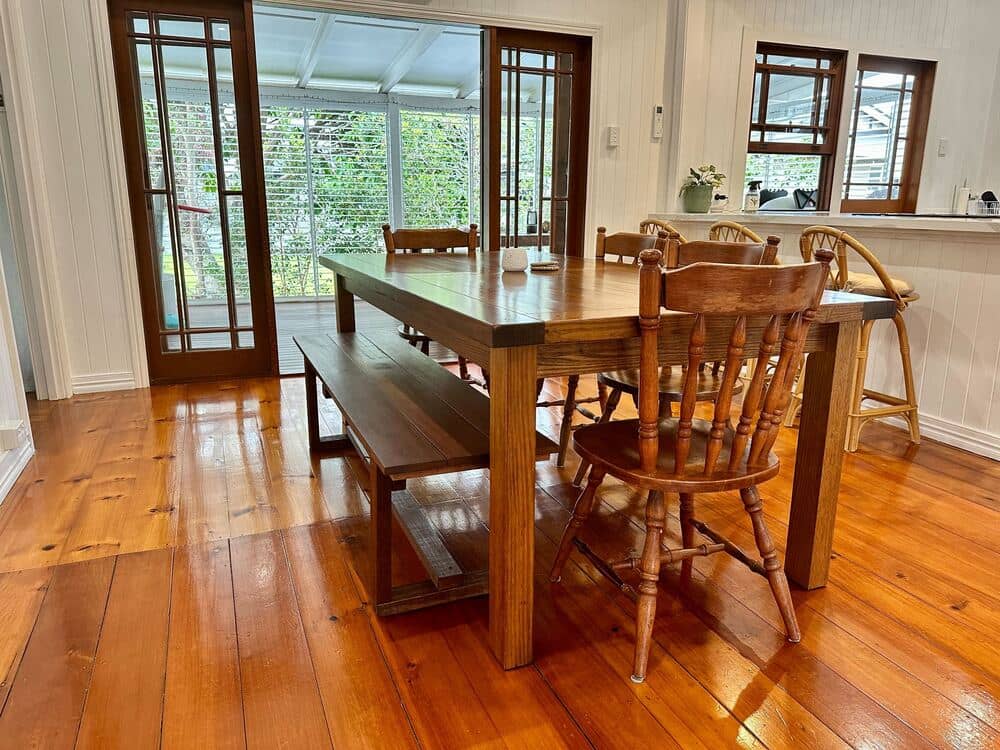Wood, like a fine wine, gets better with age. And a well-built timber floor can transform any space with its sophisticated aesthetic and homey feel.
However, hardwood floors require regular maintenance to keep up their appearance and prevent any damage.
How to clean timber floors? It’ll depend on the material and finish. Some safe and standard cleaning methods include:
- Sweeping or dry mopping once a week to remove dust, dirt, and pet hair
- Deep cleaning with mild or biodegradable soap and warm water
- Using specially formulated wood cleaners
- Drying immediately with a fresh mop or cloth to prevent prolonged water exposure
You can also take preventative measures to minimise scratching, but wear and tear can add charm to the appearance of your floors.
Here’s your ultimate guide to timber floor cleaning – from what products are safe to maintenance tips.
What to Use | General Cleaning | Solid Timber Floors | Engineered Timber Floors | Polished Timber Floors | Cleaning Different Installations | Cleaning Without Streaks | Removing Stains | Fixing Scratches
What are Timber Floors?
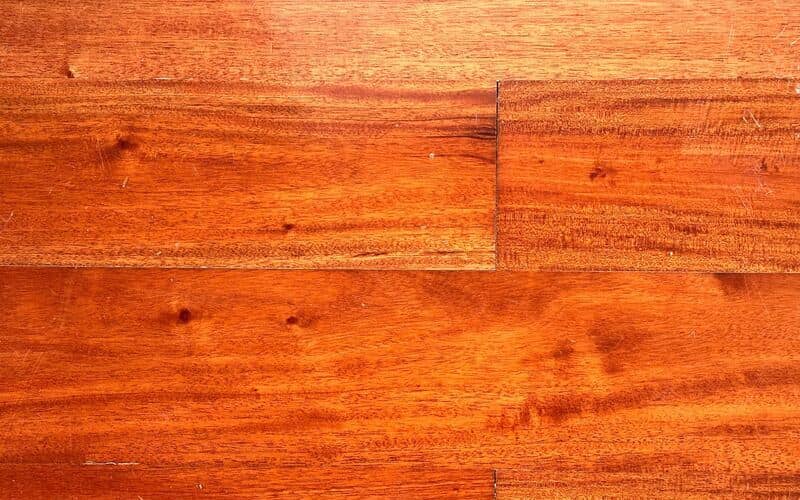
Timber or hardwood floors are made entirely from hardwood. In Australia, common types of hardwood used include Australian cypress pine, Jarrah, Blackbutt, and Spotted Gum.
There are several types of timber flooring, such as solid hardwood or engineered timber.
You can also opt for non-timber alternatives that mimic the look of a hardwood floor, such as laminate or bamboo.
How Often to Clean Timber Floors
This will depend on things such as foot traffic or pets, but it’s best to sweep or vacuum timber flooring once a week.
If the floor is in a high-traffic area, or if you own pets that shed a lot, you can sweep or vacuum once a day.
Deep clean hardwood floors once a month.
What Timber Floor Cleaning Products to Use
A timber floor collects dirt and dust over time, so it needs regular cleaning.
However, not all products are safe or recommended for use on hardwood.
Recommended wood floor cleaning products
Generally, look for cleaning products formulated for wood surfaces. Some popular choices include Weiman Hardwood Floor Cleaner or Black Diamond Wood and Laminate Floor Cleaner.
For a more eco-friendly choice, try Koala Eco’s Floor Cleaner.
If you don’t want to buy a new floor cleaner, you should be safe with a mild detergent and warm water.
To clean wood floors naturally, Castile soap and water are a great combination.
You can use white vinegar to clean wooden floors, but avoid using it on unfinished wood or wax finishes.
What not to use when cleaning timber floors
Avoid any bleach-based cleaners, since bleach can weaken the wood over time.
Other substances to avoid include ammonia, glass cleaner, and similar harsh chemicals.
Do not use any products that aren’t formulated for use on wood floors, since you could damage the finish or the wood itself.
It’s generally not recommended to use a steam cleaner on hardwood flooring. The heat and moisture could cause warping or other damage.
General Cleaning for Timber Floors
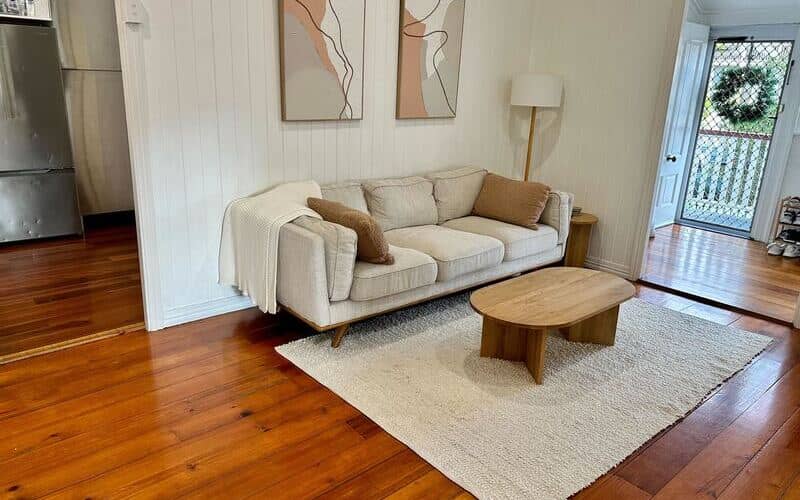
Regularly cleaning hardwood floors goes a long way towards maintaining their structural integrity and extending their lifespan.
There are several methods to clean hardwood floors depending on the material, but these four are a good baseline.
If you’re feeling daunted, a reliable home cleaner in your area can tackle your hardwood floors (and the rest of your home) with ease.
Sweeping
Sweeping using a soft-bristle broom is the “safest” way to clean hardwood timber floors.
Regular sweeping will prevent a build-up of dust, debris, and pet hair. It’ll also make it easier to deep clean hardwood floors later on.
You could also use a dust mop as it’s soft enough not to leave scuff marks.
Mopping
Dry mopping with a microfibre mop is a great alternative to sweeping. A dry mop captures fine particles without scuffing or scratching the wood.
Then, to deep clean timber flooring, opt for damp mopping. You can use a mix of mild detergent and water, or a specialised wood floor cleaner.
When mopping the floors, make sure to wring out any excess moisture before you start. Too much moisture can soak into the floorboards, which could lead to mould or cracks.
Vacuuming
You can use a vacuum cleaner on hardwood floors, but you’ll need to be mindful of the model you’re using. Some vacuum features such as beater bars or a floor brush attachment will damage the floor surface.
Some good vacuums for hardwood floors include the Miele Boost CX1 Parquet Vacuum Cleaner or Bissell CrossWave 3-in-1 Multi-Surface Floor Cleaner.
Sanding and polishing
Depending on the finish of your hardwood floors, you may need to sand and polish the surface to give the floor a “refresh.”
You can sand and polish a timber floor every 5 to 10 years.
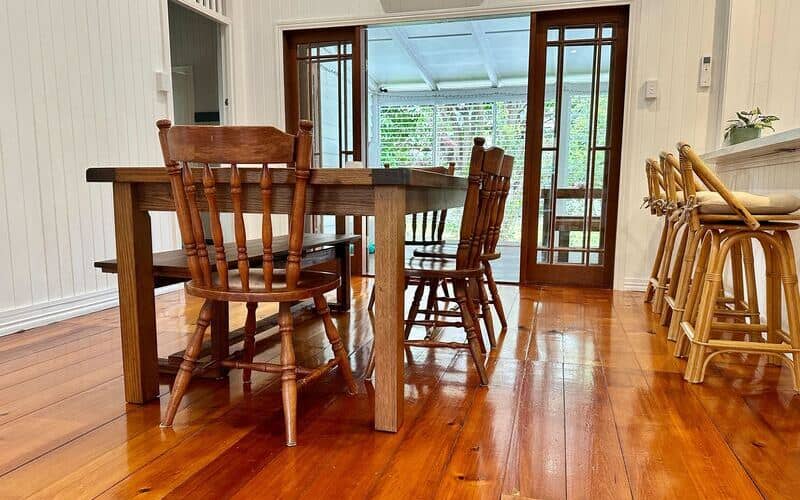
How to Clean Solid Timber Floors
Solid timber can be quite costly, but if well-maintained, it can last you a lifetime.
These cleaning methods will also work on parquet floors, as they’re often made of solid timber “tiles.”
Sweeping or vacuuming won’t completely remove dirt, grime, and other build-up.
To deep clean solid hardwood floors, you’ll need:
- Water
- Cleaning product
- Microfibre or soft mop
Once you’ve swept or vacuumed any loose debris, you can get to cleaning timber flooring.
Mix your mild detergent into warm water, or follow the package instructions on your wood floor cleaner.
Dip the mop into your cleaning solution, then wring out the excess. Use the damp mop on the floor, working in back-and-forth strokes.
If you only need to clean a small space, you can mix your cleaning solution in a spray bottle. Lightly saturate the floor, then follow with the mop.
Rinse the floor with a clean mop and fresh water if required.
Use clean towels or microfibre cloths to wipe excess wetness ASAP to prevent standing water. Then let the floor air dry.
You can speed up the drying process by opening the windows and doors, or switching on an electric fan.
How to Clean Engineered Timber Floors
Engineered flooring is more affordable while being similarly durable thanks to the solid layers. It’s also easier to install.
When cleaning wood floors made from engineered wood, opt for a microfibre mop as it uses less water.
Use a floor cleaner specially formulated for engineered wood, such as the Black Diamond Natural & Engineered Flooring Cleaner.
Always start by sweeping or vacuuming any loose dirt off the floor.
Dip the mop into the cleaning solution and wring out all the excess wetness. Use the damp mop to clean the hardwood flooring.
If your engineered timber is properly finished, you can mix half a cup of vinegar and a few drops of mild detergent into warm water.
This solution is best for removing stains or haziness on the floor surface. Test it on an inconspicuous area first to ensure you don’t damage your timber floor.
How to Clean Polished Timber Floors
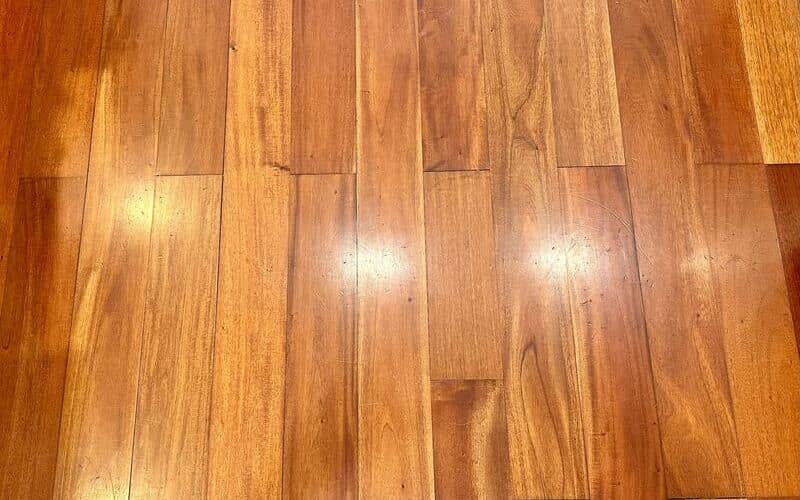
When it comes to polished hardwood floors, the cleaning method will depend on the finish. Certain polishes or laminates may require more specialised cleaning methods.
Before cleaning polished wood floors, sweep or vacuum any loose debris to prevent scuffing or pushing dirt further into the floor material.
How can I tell what kind of polish my hardwood floor has?
If you’ve moved into a home or apartment with polished hardwood floors, you may not know the type of polish that’s been used. If the realtor or landlord can’t tell you, you can do some simple tests!
Try pouring a few drops of water onto the wood flooring. If the water absorbs quickly or creates spotting, your floor is unsealed. This means you either need to seal it yourself or avoid cleaning with water.
If the water beads on the surface, that means your floor has been sealed.
Next, take some fine steel wool and very lightly scrub a corner of your floor. Waxed finishes will leave a thin, waxy residue on the steel wool. On the other hand, flaking means a polyurethane coating.
To test for shellac, take some denatured alcohol. On an inconspicuous spot, place a drop of the alcohol. Shellac will rub off with a paper towel.
Lastly, to test for lacquer versus varnish, try a drop of lacquer thinner. The surface will become sticky if it’s been lacquered, while varnish will remain undamaged.
Cleaning polyurethane timber flooring
Polyurethane is a plastic polymer that provides an aesthetically pleasing but durable coating on wood.
You can safely use a vinegar solution when cleaning timber floors with polyurethane coating.
Mix half a cup of vinegar and some mild detergent into a bucket of lukewarm water. Use a microfibre mop or soft cloth to apply the solution to the surface.
Mop in the direction of the wood grain. Follow with a clean cloth or mop, working in a circular motion to dry the floor.
Cleaning shellac timber flooring
Shellac is a natural laminate made from resin flakes. It’s easy to clean, but is more susceptible to water spots.
However, know that it’s great for blocking odours from pet urine and preventing silicone contamination.
To clean a shellacked timber floor, you’ll need:
- Mild, biodegradable soap (such as Castile soap or Koala Eco’s Natural Dish Soap)
- Water
- Microfibre mop or cloth
Avoid using “oil soap” products or anything that contains alcohol (especially denatured alcohol).
Mix a bit of the mild soap in the water. Dip a soft cloth or mop into the solution, then wring it out.
Use the mop to apply the solution, working with the wood grain. Follow with a damp cloth to rinse, then a fresh cloth or mop to dry.
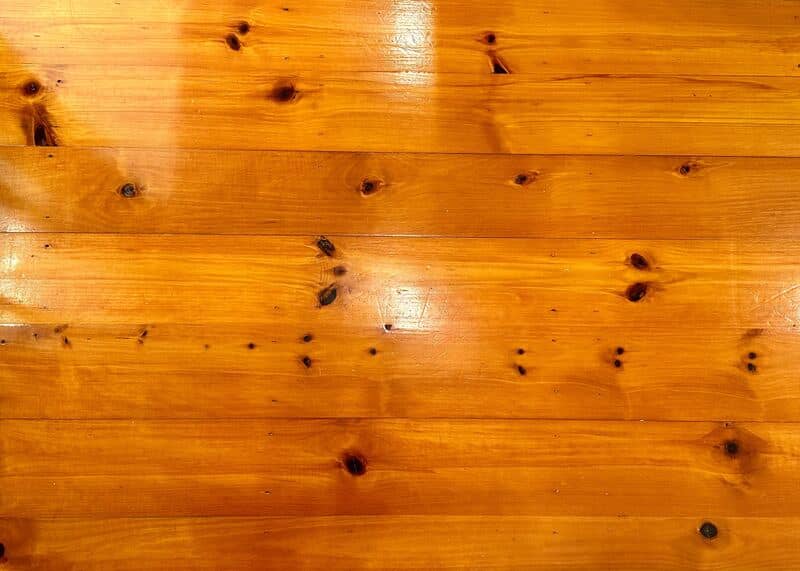
Cleaning waxed timber flooring
Wax is a natural finish for wood floors, typically made from beeswax, linseed, paraffin, and other natural extracts. It offers a sleek finish that protects against minor scratches and scuffing.
Due to the organic nature of the wax finish, you’ll need to be more mindful when cleaning.
Mopping with lukewarm water should be enough for everyday maintenance. For a deeper clean, mix a biodegradable soap with some water and use that to mop the floor.
Avoid using vinegar or chemical cleaners, unless specially formulated for waxed finishes – such as the Karcher Oiled/Waxed Wooden Floor Cleaning Detergent.
Cleaning varnished timber flooring
Floor varnishes are made from different resins, such as acrylic or pine. Typically, varnished finishes make wood floors more resistant to water and abrasion.
However, spills, scuffs, and water spots can dull the finish of a varnished floor.
To clean varnished hardwood floors, use a special wood floor cleaner (such as those recommended above). Avoid any all-purpose cleaners or abrasive cleaners like baking soda, and do not use oil-based products.
Rinse and dry the floor immediately to prevent any spotting on the surface.
Reapply a floor polish every 3 months or so, as part of your preventative measures.
How to Clean Different Timber Flooring Installations
There are two main types of timber floor installations – direct-stuck and floating.
Each installation method has specific cleaning methods due to their positioning.
Direct-Stuck vs. Floating
Floating floors are not bonded to the subfloor, instead relying on weight and friction to hold the floor in place. They’re more DIY-friendly, with faster and more affordable installation. They’re also easy to replace or even remove later on.
However, floating floors are more susceptible to moisture and mould thanks to the gaps. They’ll also creak and move more, such as growing or shrinking with temperature.
Direct-stuck floors have boards individually attached to the subfloor with adhesive. They’re easier to refinish and will have less movement as time goes by. That makes them less susceptible to cracking or moisture.
It’s harder to repair direct-stuck floors, however, and you cannot cover them with additional flooring. Direct-stuck floors are also more expensive to install and have more stringent requirements.
How to clean direct-stuck hardwood floors
Since direct-stuck floors are typically well-sealed and finished, they’re easy to clean.
You can wet mop direct-stuck hardwood floors with mild detergent and water. Make sure the mop isn’t too wet to avoid seepage or damage.
How to clean floating timber floors
When cleaning floating floorboards, opt to sweep or spot clean first. Wipe any spills or stains with a damp cloth, then immediately dry.
You can also spot clean with a damp microfibre cloth and a few drops of mild detergent.
If that’s not enough to remove dirt, move to mopping. Add a bit of mild detergent to water in a bucket, then dip a microfibre mop into the solution.
Wring out the mop thoroughly, then work in the direction of the grain. Follow with a dry mop to remove excess moisture. Open the windows and doors to let the floor air dry.
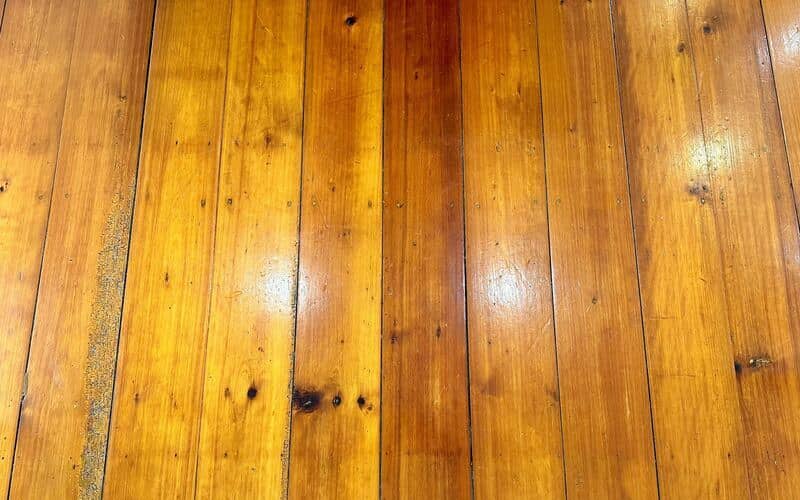
How to Clean Hardwood Floors Without Streaks
When cleaning timber flooring, always work with the grain of the wood.
Only use cleaning products made for a timber floor. Make sure the product is formulated for the type of wood and finish you have in your home.
If your timber material allows it, follow your cleaning solution with a mix of vinegar and water. This will cut through any haze or residue on the wood surfaces.
Once you’ve finished mopping, take a clean microfibre cloth or mop and buff the timber floor in circular motions. This will remove any residue and add a sheen to the surface.
How to Remove Stains from Timber Flooring
Clean up any spills, stains, or accidents ASAP. The longer a stain sits, the harder it is to remove.
A soft cloth and some water should be enough for most stains.
However, for tougher stains, you can try:
- #0000 super fine steel wool and wood floor wax
- Anti-grease dish detergent and water, then fine sandpaper
- One tablespoon of mineral spirits in a bucket of lukewarm water
- Wood-safe enzymatic cleaner (best for pet messes)
Never use steam mops or steam cleaners to remove stains.
How to Fix Scratches on Timber Flooring
Exuberant pets, vacuum cleaner attachments, and general traffic can all cause scratches and scuff marks on your floor’s surface.
While minor wear and tear adds character to a timber floor, you can also fix superficial scratches.
- Touch up surface scratches with a wood stain marker
- Use a wax stick for deeper marks
- Buff scratches with super-fine sandpaper then apply wood stain
You can prevent scratches and scuff marks by using rugs and mats on the floor. There are also protective pads for heavy furniture.
Maintaining Timber Flooring
Recoat your hardwood floors every few months (or less frequently, depending on the amount of traffic in the room). Deep clean the floor, then buff the surface to maximise adhesion.
Apply a new coat to refresh the finish and add another layer of protection. Avoid walking on a newly-coated floor for a few hours to let it set.
Place floor mats at entrances to minimise any dirt and debris tracked into your home. You can also set up a special removal area during wet or frosty weather.
Avoid wearing footwear that can cause scratches, such as heels or cleats, when walking on hardwood floors.
If you have plants, use pots that come with plates or water reservoirs. This will minimise any moisture leakage after watering.

